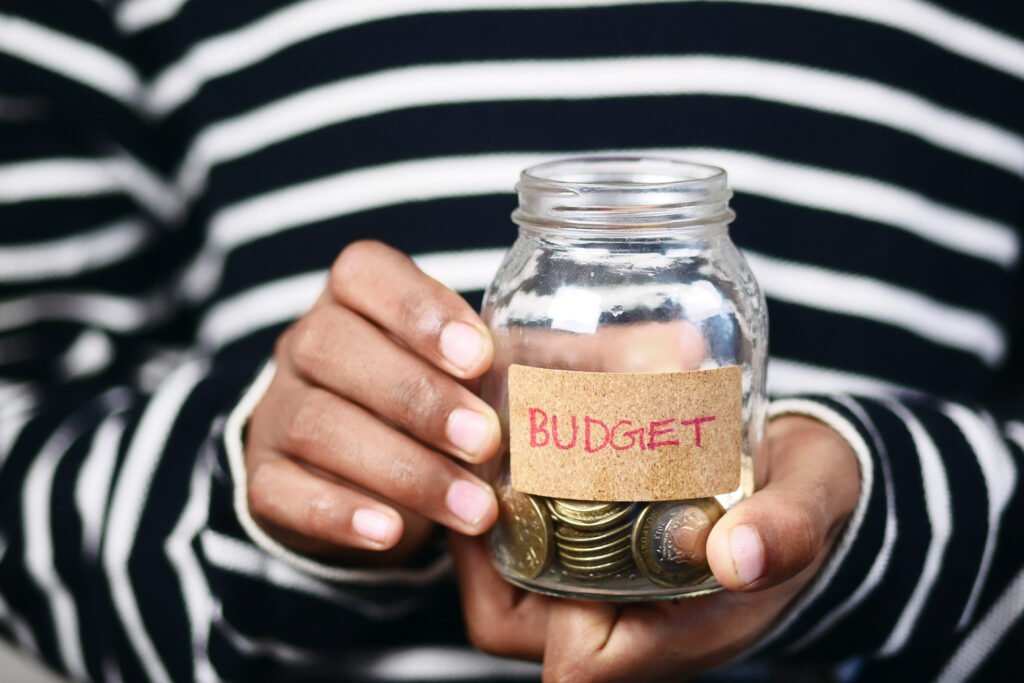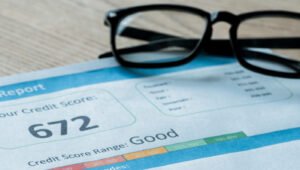Budgeting is an essential life skill that empowers you to take control of your financial destiny.The purpose of this article is to demystify the concept of budgeting and present it as a practical, achievable endeavor. We’ll explore the basic components that make up a budget and offer a step-by-step guide to creating a budget tailored to your unique financial situation. By the end of this guide, you’ll have the knowledge and tools to manage your finances effectively.
The Importance of Budgeting
Budgeting is a crucial habit that significantly impacts your financial well-being. Contrary to common misconceptions, budgeting is neither complicated nor restrictive. In fact, it’s a liberating practice that sets you on the path to financial wellness.
Budgeting acts as the backbone of your financial life. It’s a roadmap outlining your income, expenses, and savings. Without a budget, you’re flying blind, making it easy to make poor financial decisions. For instance, you might think you can afford a small luxury, but a budget could reveal that it’s not financially wise at the moment.
Financial freedom is about having choices and making life decisions without financial stress. Budgeting is pivotal in achieving this. By tracking your income and expenses, you can allocate funds to different financial goals, such as buying a home or building an emergency fund.
The Psychological Benefits of Budgeting
Budgeting also offers psychological benefits. Knowing you have a financial plan alleviates stress and contributes to better mental health. Studies show a direct correlation between financial stress and mental health issues.
In summary, budgeting is an indispensable tool for financial wellness. It provides structure, enables informed decisions, and contributes to your overall well-being. With budgeting, you’re steering towards a destination of financial wellness and freedom.
How to Create a Budget That Works for You
Creating a budget that works for you is not a one-size-fits-all endeavor. Your budget should be a reflection of your financial goals, lifestyle, and priorities. The key is to make it flexible enough to adapt to life’s uncertainties while being stringent enough to help you achieve your financial objectives.
The first step in creating a budget is to identify all your income streams. This includes not just your salary, but also any freelance work, rental income, or dividends from investments. Knowing your total income is crucial because it sets the parameters for your spending and saving.
The next step is to categorize your expenses into fixed and variable costs. Fixed costs are expenses that remain constant each month, like rent or mortgage payments. Variable costs fluctuate, such as groceries, entertainment, and utility bills.
Let’s say you spend $1,200 on rent, $300 on groceries, and $100 on utilities. Knowing these numbers allows you to allocate funds appropriately and identify areas where you can potentially save.
Set Financial Goals
Setting financial goals is the cornerstone of a successful budget. These could range from short-term goals like saving for a vacation to long-term objectives like retirement planning. Your budget should be structured in a way that allows you to allocate funds toward these goals.
For instance, if one of your goals is to save $10,000 for a down payment on a house, you could allocate $500 from your monthly income toward this goal. This makes the objective achievable and less overwhelming.

Choose the Right Budgeting Method
Choosing the right budgeting method is crucial for the success of your financial plan. The method you choose should align with your financial goals, lifestyle, and spending habits. Here are three popular budgeting methods, along with examples to help you understand how each works:
The 50/30/20 Rule
This is one of the most straightforward budgeting methods. According to this rule, you allocate 50% of your income to needs, 30% to wants, and 20% to savings and debt repayment.
If your monthly income is $4,000, you would allocate $2,000 for needs like rent and groceries, $1,200 for wants like dining out and entertainment, and $800 towards savings or paying off debt.
Zero-Based Budgeting
In zero-based budgeting, every dollar has a job. At the end of the month, you should have zero dollars left unallocated. This method requires you to be very meticulous with your spending and can be time-consuming but is excellent for people who need a strict framework.
If your monthly income is $4,000, you would allocate every dollar to various categories like rent, groceries, utilities, savings, etc., until you have zero dollars left. If you find you have $200 left after all allocations, you would assign it to a specific category like an emergency fund or a vacation fund.
The Envelope System
This is an old-school but effective method, especially for controlling variable expenses. You allocate cash in different envelopes for different spending categories, and once the cash is gone, that’s it for the month.
If you allocate $300 for groceries for the month, you would put this amount in an envelope labeled ‘Groceries.’ Every time you go shopping, you would only use the cash from this envelope. Once it’s empty, no more grocery spending for the month.
Each of these budgeting methods has its pros and cons, and what works for one person may not work for another. The key is to choose a method that you can stick with and that aligns with your financial goals. Once you’ve selected a method, integrate it into your budgeting process, and adjust as needed to make it as effective as possible for you.
Use Budgeting Tools and Apps
In today’s digital age, numerous budgeting tools and apps can help you track your income and expenses effortlessly. Apps like Mint or YNAB offer features that can categorize your spending, set reminders for bills, and even provide financial advice.
Review and Adjust Regularly
A budget is not set in stone. Life happens, and your financial situation can change. Therefore, it’s essential to review and adjust your budget regularly to ensure it remains aligned with your current financial status and goals.
Creating a budget that works for you involves a series of thoughtful steps. From identifying income streams to setting financial goals and choosing the right budgeting method, each step is crucial in crafting a budget that not only meets your current needs but also propels you toward your future financial aspirations. With the right approach and tools, budgeting can become a seamless part of your daily life, leading you to financial wellness and freedom.

Best Budgeting Tools and Apps
In today’s digital age, managing your finances has never been easier thanks to a plethora of budgeting tools and apps available at your fingertips. These tools can automate many aspects of budgeting, making it easier to stick to your financial plan. Here, we’ll explore some of the best budgeting tools and apps that can help you achieve your financial goals.
Mint: The All-in-One Financial Dashboard
Mint is a popular budgeting app that offers an all-in-one dashboard for your finances. It links to your bank accounts, credit cards, and investment portfolios to give you a comprehensive view of your financial situation.
If you have multiple bank accounts and credit cards, Mint can consolidate all this information. It categorizes your spending and even suggests a budget based on your spending habits.
YNAB (You Need a Budget): For the Proactive Budgeter
YNAB stands for “You Need A Budget,” and it’s designed for those who want to be proactive about their budgeting. Unlike Mint, which is more of a financial overview tool, YNAB is focused solely on budgeting. It uses a zero-based budgeting approach, encouraging you to give every dollar a job.
If you earn $4,000 a month, YNAB will prompt you to allocate every dollar towards your expenses, savings, and investments until you have zero dollars left unallocated.
PocketGuard: For Simplified Budgeting
PocketGuard is perfect for those who want a simplified budgeting experience. It automatically categorizes your expenses and shows you how much you have left to spend in a given category, making it easier to avoid overspending.
If you set a monthly budget of $300 for groceries, PocketGuard will track your spending in real-time and notify you if you’re nearing your limit.
Google Sheets: The DIY Approach
For those who prefer a more hands-on approach, Google Sheets offers a free and customizable way to manage your budget. You can create your own budgeting template or use one of the many free templates available online.
You can create different sheets for income, fixed expenses, variable expenses, and financial goals. This allows you to have a detailed overview of your finances and make adjustments as needed.
Security Concerns
Given that these tools often require access to your financial accounts, make sure to choose apps that offer robust security features like two-factor authentication and data encryption.
In summary, budgeting tools and apps can be a game-changer in managing your finances. Whether you’re a budgeting novice or a seasoned pro, there’s a tool out there that can meet your needs and help you achieve financial wellness. The key is to choose one that aligns with your budgeting style and financial goals. With the right tool, budgeting can become not just manageable but also enjoyable.
Conclusion
Budgeting is a critical step toward achieving financial wellness and independence. By understanding the importance of budgeting, choosing a method that aligns with your lifestyle, and leveraging the power of modern budgeting tools, you set yourself on a path to financial stability and growth. Remember, the key to successful budgeting is consistency and adaptability. Your financial situation will change—sometimes unpredictably—and your budget should be flexible enough to accommodate those changes. So, take the first step today, choose the right tools, and commit to a budgeting routine.










